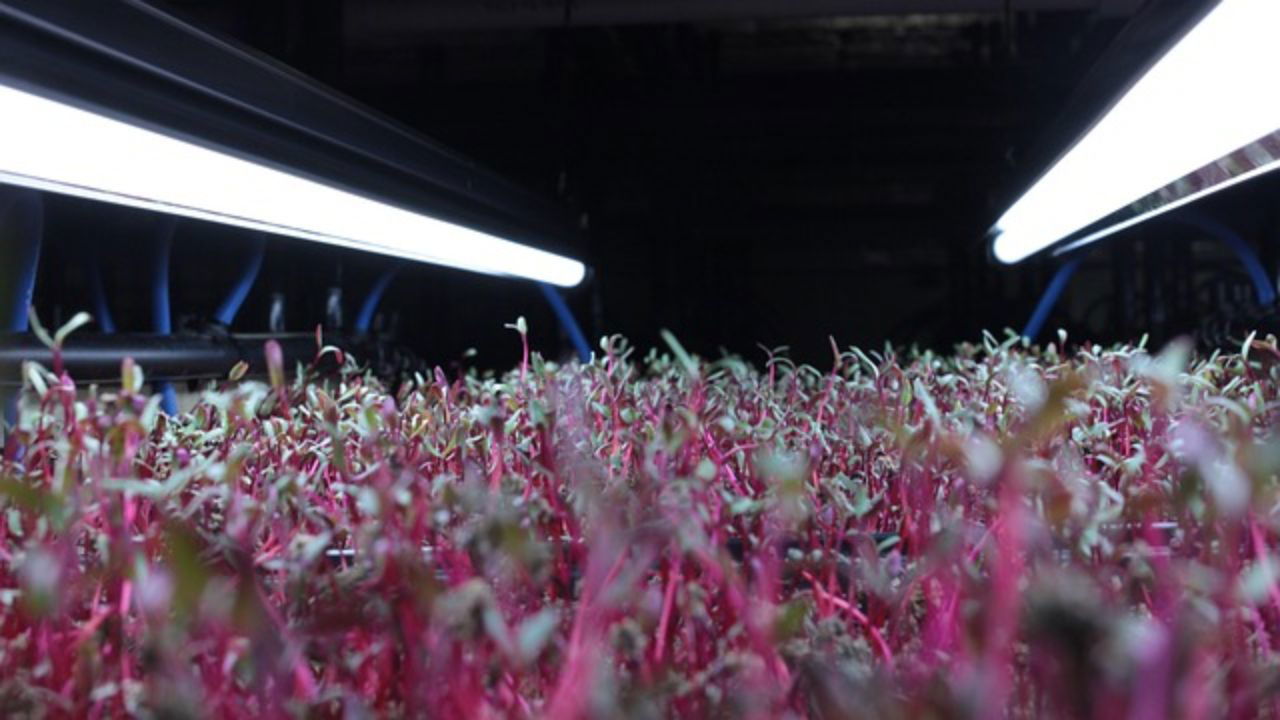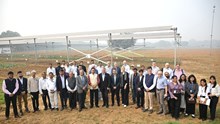
Microgreens are emerging as a new generation of smart, nutrient-dense foods. Their popularity has surged in recent years, with more people incorporating them into their diets for both flavor and health benefits. These tiny, vibrant greens are the young seedlings of various vegetables, herbs, and plants, harvested at the early stages of growth when their cotyledons (seed leaves) are fully developed, and the first true leaves start to appear.
Packed with higher concentrations of vitamins, minerals, and bioactive compounds compared to their mature counterparts, microgreens are recognized for their exceptional nutritional value. These mini powerhouses are increasingly featured in gourmet dishes for their unique textures, flavors, and vibrant colors.
Grown in soil or other growing mediums, microgreens are typically ready for harvest within 7–14 days after germination, making them a fast-growing, sustainable option for health-conscious eaters. Unlike sprouts, which are consumed with their roots, microgreens are harvested just above the soil level, offering a distinctive culinary experience.
Need for Microgreens in Modern Agriculture
It is getting harder to find fresh, pesticide-free vegetables nowadays. This has happened due to growing urbanization and shifting eating patterns. Long food supply chains are the main source of sustenance for urban people. This restricts access to fresh vegetables with limited shelf lives.
The lifestyle-related diseases and nutritional deficiencies have increased. This is due to the consumption of more processed food. Microgreens are a useful way to overcome these issues. As they are easy to grow in small areas and provide a wealth of vital nutrients.
Nutritional Benefits of Microgreens
Microgreens are an excellent source of essential vitamins and minerals. They contain high amounts of vitamins A, C, E, and K, carotenoids, enzymes, and antioxidants. Their composition varies with the type of plant, growing medium, sunlight exposure, and harvesting time. Brightly colored microgreens tend to have higher nutrient levels than their lighter counterparts.
Compared to mature greens, microgreens have higher levels of β-carotene, lutein, and neoxanthin. This contributes to better eye health and overall immunity. They also offer a good balance of protein, iron, and zinc. These all make them a valuable dietary addition for individuals suffering from nutritional deficiencies.
Growing Microgreens: Indoor vs. Outdoor Farming
Microgreen farming is easily adaptable to the growing environment. Farmers should decide first whether they want to grow microgreens indoors or outdoors. Each of these methods has its benefits and challenges.
Indoor farming has better control over environmental conditions such as temperature, humidity, and light. Microgreens prefer a stable temperature range. An indoor setup is like a spare room, garage, or greenhouse. These places can be ideal for year-round cultivation. This method also reduces exposure to pests and diseases. This also reduces the need for pesticides and provides a cleaner product.
For those farmers who are using outdoor spaces for farming. It eliminates them from artificial light. Such farming techniques could be economically challenging to one having large fields. Environmental temperature and pest control also present adverse factors. It finds a balanced point in using greenhouse farming for natural sunlight. It will still protect their produce from rainstorms and extremely harsh weather.
Even though growing microgreens from greenhouse farming does come with an initial cost. The yield is continuous in the greenhouse and thus their quality too.
Step-by-Step Guide to Growing Microgreens
Microgreens can be grown using various mediums such as soil, tissue paper, and hydroponics. A commonly used medium is a blend of coco-peat, vermiculite, and perlite in a 5:2:1 ratio. This mixture will provide optimal aeration and moisture retention. This medium releases nutrients gradually. This will allow farmers to reuse it multiple times.
Seeds should be planted throughout the year depending on the demand of the consumers.
Before reusing the soil, the residues of the previous plants should be removed. The medium should be dried under sunlight to avoid microbial growth. Ideal growing conditions include proper moisture levels, moderate temperature, and controlled light exposure. Higher light intensity and good air circulation result in better color, flavor, and texture.
Harvesting and Storage
Microgreens are ready for harvest within 7-14 days in tropical climates. It gets ready in 14-28 days in temperate regions. The young greens are cut just above the soil using scissors. This ensures they remain fresh and free from contaminants. Microgreens have a short shelf life.
Proper storage techniques are essential. Commercial microgreens are often packaged in plastic clamshell containers, The biodegradable alternatives are gaining popularity to meet sustainability demands. Microgreens maintain freshness and their nutrient content well when we kept low and modify atmosphere packaging.
Economic Potential of Microgreens Farming
Farming microgreens has become a good business opportunity for farmers. Demand for microgreens rises because of food insecurity and the loss of conventional crop production. The new indoor farming practice due to such insecurity, large and small scale farmers have seen the opportunity with microgreens.
The minimal investment during its initial stages is a major benefit of microgreens farming. Farmers start with a minimum amount of input. They can sell them to restaurants, supermarkets, and local markets. They can also scale up according to market demand. It takes only 7-14 days from sowing to harvest. This allows multiple harvesting cycles within a short span, hence increasing profit.
Microgreens are also a high-value crop. Premium prices can be charged for locally grown, pesticide-free microgreens. They offer a continuous income stream, ensuring financial stability for farmers.
A Sustainable and Profitable Future
Microgreens are nutrient-rich food sources. They are also a profitable and sustainable farming option. Their high market demand, ease of cultivation, and minimal resource requirements make them an ideal crop for both urban and rural farmers. Microgreens farming can provide a steady income while contributing to a healthier population, This can be done with proper planning, investment in controlled growing environments, and effective marketing
Microgreens are a sustainable, nutrient-rich crop ideal for small-scale and urban farming. Their quick growth and high market demand offer agricultural entrepreneurs a reliable revenue stream. Integrating microgreens can boost nutrition and food security.
















